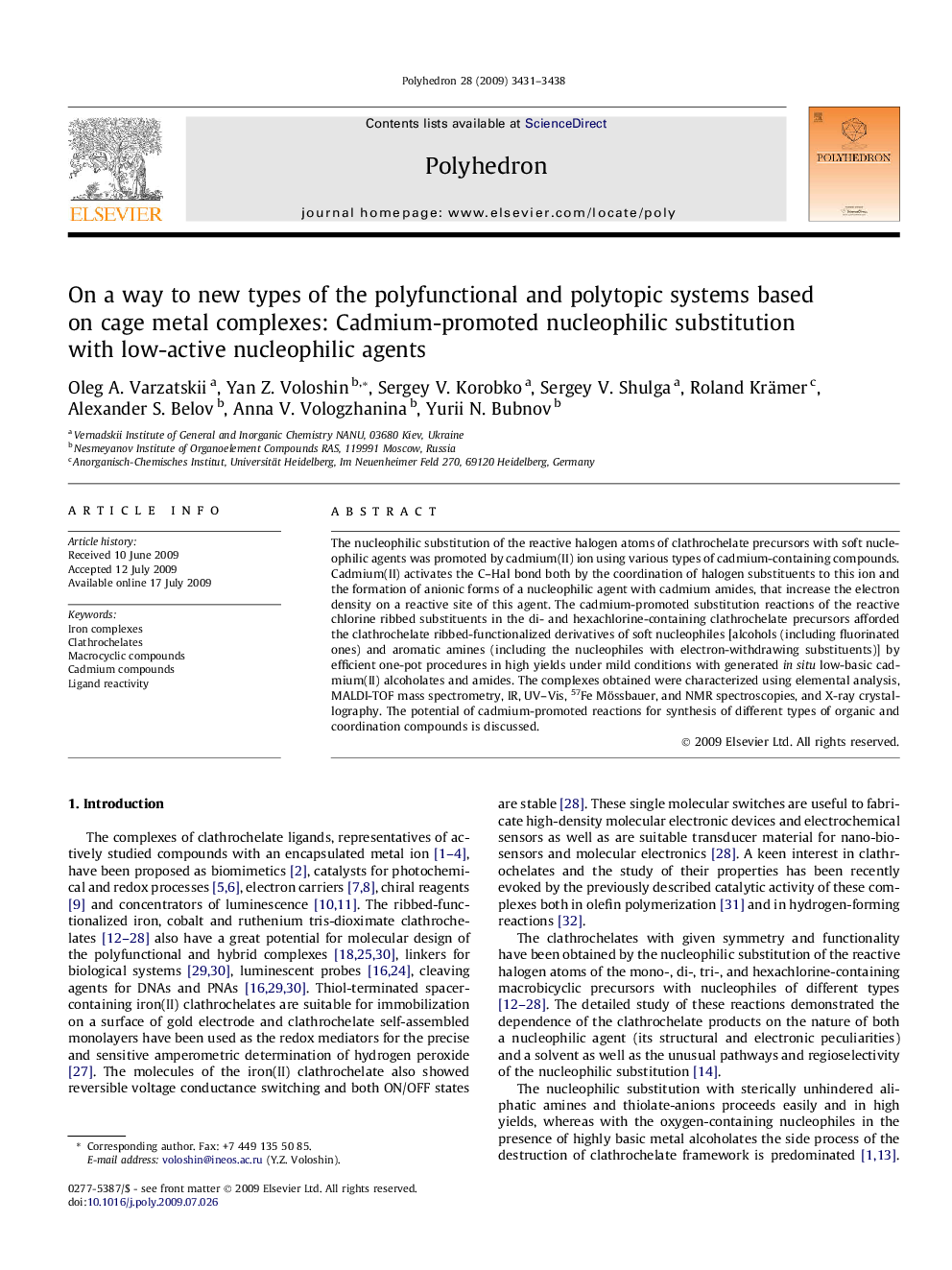| Article ID | Journal | Published Year | Pages | File Type |
|---|---|---|---|---|
| 1337242 | Polyhedron | 2009 | 8 Pages |
The nucleophilic substitution of the reactive halogen atoms of clathrochelate precursors with soft nucleophilic agents was promoted by cadmium(II) ion using various types of cadmium-containing compounds. Cadmium(II) activates the C–Hal bond both by the coordination of halogen substituents to this ion and the formation of anionic forms of a nucleophilic agent with cadmium amides, that increase the electron density on a reactive site of this agent. The cadmium-promoted substitution reactions of the reactive chlorine ribbed substituents in the di- and hexachlorine-containing clathrochelate precursors afforded the clathrochelate ribbed-functionalized derivatives of soft nucleophiles [alcohols (including fluorinated ones) and aromatic amines (including the nucleophiles with electron-withdrawing substituents)] by efficient one-pot procedures in high yields under mild conditions with generated in situ low-basic cadmium(II) alcoholates and amides. The complexes obtained were characterized using elemental analysis, MALDI-TOF mass spectrometry, IR, UV–Vis, 57Fe Mössbauer, and NMR spectroscopies, and X-ray crystallography. The potential of cadmium-promoted reactions for synthesis of different types of organic and coordination compounds is discussed.
Graphical abstractThe one-pot cadmium-promoted nucleophilic substitution of the reactive di- and hexachlorine-containing clathrochelates with soft nucleophilic agents afforded the ribbed-functionalized clathrochelates in high yields under mild conditions. The potential of cadmium-promoted reactions for synthesis of the organic and coordination compounds is discussed.Figure optionsDownload full-size imageDownload as PowerPoint slide
